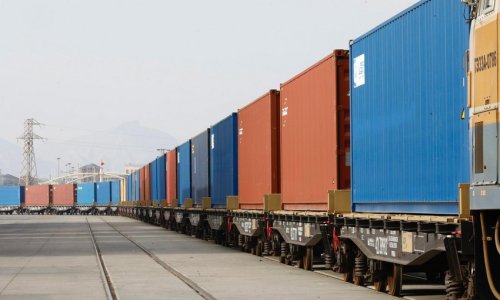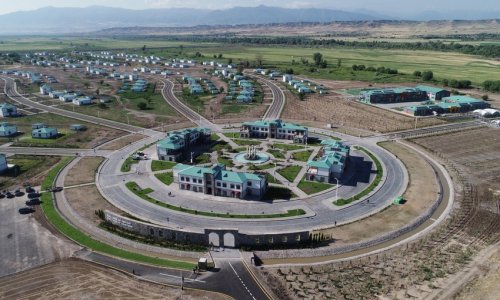(EIU) -- The government has presented its draft budget for 2015, which envisages a jump in expenditure of over 6%. With the government adopting a conservative forecast for revenue from the non-oil sector, it has elected to fund this expenditure with a large increase in transfers from the State Oil Fund of the Republic of Azerbaijan (SOFAZ), the country's sovereign wealth fund into which most of the public revenue from the oil sector is initially paid.
The government has therefore taken the decision to further increase its reliance on the energy sector to cover current spending, even as output and oil prices continue to fall.
Under the draft budget, expenditure next year will total 21.1bn manat (US$26.9bn). We estimate that government spending this year will total 19bn manat. Spending is thus set to rise by 6.6% year on year. This represents a pick-up in the rate of growth of government expenditure from this year, when we estimate that spending will rise by just 3.4% compared with 2013.
Based on a forecast of average consumer price inflation next year of 2.1%, we expect expenditure to rise by 4.4% in real terms, compared with an estimate of just 2% in 2014. This is nevertheless well below the real growth rates recorded in 2002-12, which averaged almost 19% a year.
Overall, the government projects total revenue at Manat19.4bn, a rise of just 2.2% year on year. With the SOFAZ transfer set at Manat10.4bn, this implies revenue from the non-oil economy of Manat9.05bn, a fall of 6.6% year on year against our 2014 estimate. This implies a budget deficit next year of Manat1.66bn.
Based on our forecast for nominal GDP of Manat63.1bn, this would result in a budget deficit equivalent to 2.6% of GDP, the largest shortfall since the 1990s.
We regard this revenue projection as overly pessimistic. The government has a tendency to set itself modest revenue targets that it is then able to exceed. With the non-oil sector still set to expand next year, we expect revenue, excluding SOFAZ transfers, to rise by 4% year on year. Assuming the SOFAZ transfer is not reduced in response to stronger than projected non-oil income, we expect total revenue to stand at Manat20.5bn, an increase of 7.6% compared with 2014. As a result, the overall deficit is projected at Manat630m (US$803m), equivalent to 1% of GDP. This would represent a modest narrowing of the budget shortfall compared with 2014, for which we estimate a deficit equivalent to 1.3% of GDP.
Although the government has adopted a conservative forecast for non-oil revenue, it has also partially reversed course with regard to reducing the budget's reliance on the oil sector. Dependence on oil revenue to balance the budget is high. In 2013 transfers from SOFAZ accounted for 58% of all budget revenue. The budget deficit, excluding transfers from the oil fund, in that year stood at Manat11bn, or 19.1% of GDP.
In its 2013 Article IV report the IMF cautioned the government that reliance on SOFAZ transfers made fiscal sustainability vulnerable to falls in the oil price. This would lead to a loss of revenue from oil sales, forcing the government either to reduce budget transfers, and therefore expenditure, or else draw down on SOFAZ's existing assets, which could lead to the rapid depletion of the sovereign wealth fund.
The government has resisted calls from the IMF to introduce a formal fiscal rule to manage reliance on oil revenue. However, in 2014 it cut the rate of growth in overall expenditure sharply and reduced the SOFAZ transfer by 17.7% year on year. As a result, the SOFAZ transfer is projected to fall to 15.5% of GDP this year, from 19.7% in 2013; the non-oil budget deficit is projected to contract to 16.8% of GDP.
Under the 2015 budget, however, SOFAZ transfers will rise by 11.3% compared with 2014. As a result, we forecast that the SOFAZ transfer will rise to 16.5% of GDP. Under the government's official revenue projection, this would mean that the non-oil budget deficit would widen back to its 2013 level of 19.1% of GDP. Even under our forecast, which assumes higher non-oil revenue, the non-SOFAZ deficit will total 17.5% of GDP, compared with 16.8% in 2014.
Even as oil prices fall
Budgetary dependence on oil revenue has increased again even as oil prices have fallen sharply. As with the 2014 budget, the government has indicated that the draft budget is based on an oil price of US$90/barrel. We assume this means that this price will deliver sufficient revenue from oil sales to SOFAZ to cover the planned budgetary transfer without drawing down on existing assets in the sovereign wealth fund.
Following recent falls, however, the oil price may now average below this break-even point, leading to losses for the sovereign wealth fund. The average price of Brent crude fell by over 10% month on month in October, to US$87.3/b. In November Azeri Light Crude was trading at US$86.7/b according to Platts, a news service specialising in the energy sector.
We are about to revise down our forecast for average Brent prices to around US$88/b in 2015 and US$85/b in 2016. Although Azeri Light Crude typically trades at a premium to Brent, it is possible that average prices in 2015 may be below the US$90 break-even point. As a result, the government may need to draw on existing SOFAZ assets to cover budgetary transfers, leading to a fall in the size of the fund for the first time since its establishment in 1999.
Increasing transfers from the oil fund will allow the government to raise public expenditure in 2015, which will help to support economic growth next year in the face of a weak external environment and slowing household demand. However, it also underlines the urgent need to diversify the economy in order to reduce fiscal dependence on the energy sector as oil output and prices start to fall.
To date, the government has struggled to achieve this, increasing the potential economic and fiscal impact of a sudden drop in the oil price.











